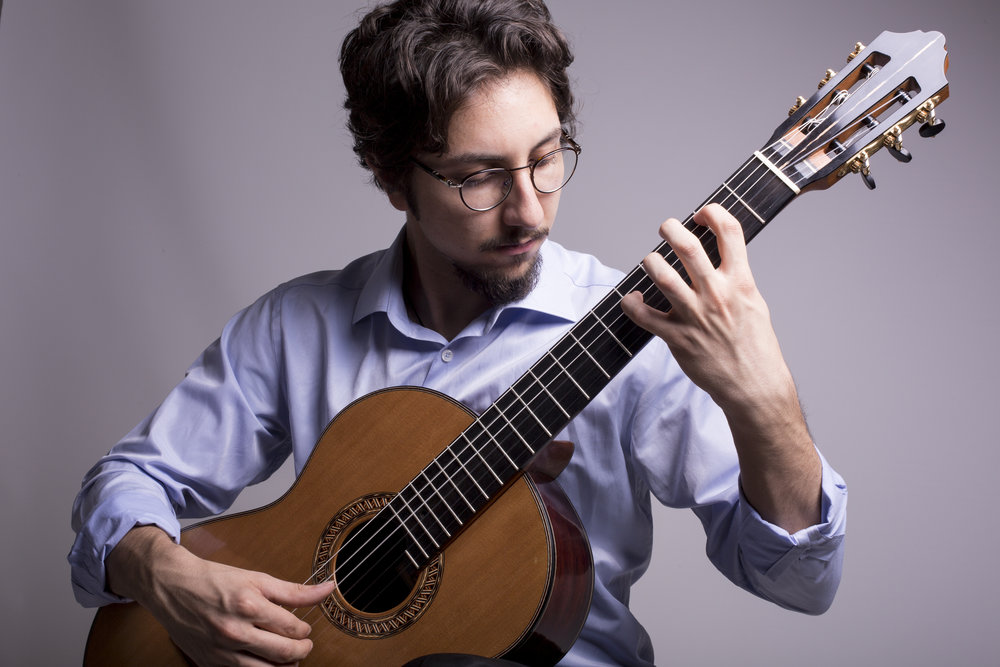by Jarrett Hoffman

“Celil, every concert you do for us, you have to play one of your own compositions,” Guitar Society executive director Erik Mann once said to him. Mann laughed as he recalled that line last month in an interview. It was a friendly request, not a stern one, but there was a seriousness behind it born out of respect for Kaya’s music.
Speaking from New Jersey, where he teaches at New Jersey City University, Kaya described the gestation of the work he’ll bring to Cleveland this weekend. “I was planning to compose this piece for a long time — since I was a teenager, actually. My father had a bunch of these surreal, fantastic sketches, and I wanted to write pieces based on them, but I never had a chance to do it.”
Finally, in the pandemic, he found time to return to his old drafts, and Sketches became a reality.
Kaya described it as more avant-garde than the last piece he brought to Cleveland, the Sonatina. He also said it bears a strong influence of Turkish folk music in three of its four movements. “One of them is a portrait of a Black Sea fisherman, so I use a lot of irregular meters, just like the Black Sea music.” Elements like that have made the project interesting and fun to work on, he said, noting that this is only Volume 1 of Sketches — a second is in the works.

(Clockwise from top-left: Blind Fisherman, Blind Fisherman’s Wife, Bosporus, Bridge, all by Celil’s father Mehmet Refik Kaya)
Celil Refik Kaya has been composing since childhood. That interest became more official when, partly at the suggestion of his father, he added composition lessons during his bachelor’s program in guitar at the Mimar Sinan Fine Arts University State Conservatory in Istanbul. “I didn’t have to practice as much as my friends did, I would say, so I had time to devote to composition.”
While Kaya doesn’t think that studying composition is necessarily a good fit for every performer, he believes it’s helpful for any musician to learn aspects of theory such as harmony and counterpoint. “Those basics help you understand composition at least a little bit, and that’s really important,” he said. “It makes you a more complete musician.”
From there, we turned to other types of musical creation, given that the program also includes Kaya’s arrangement of three works by Astor Piazzolla, and his transcription of Jean-Baptiste Loeillet’s Suite in e — one step toward his goal of eventually adapting the composer’s complete harpsichord suites.
“To me, arranging is very similar to composition,” Kaya said. “It requires a lot of knowledge about harmony and counterpoint, and you have to decide what to take out and what to add. I think composers do this best. Transcription I separate from arrangement — any instrumentalist should be able to do it.”
We closed our conversation on the late Jorge Morel, who passed away in February, and who will be represented on the program by his Sonatina.
“Since I was about 15, Jorge was always one of my favorite composers — and one of my favorite composers to play,” Kaya said. “When I first came to New York and my former teacher Michael Newman introduced me to him, I couldn’t believe it.
“We sort of became friends. I went to him, played his pieces for him. It was very helpful to hear his insights. I feel like I was able to really understand him as a composer — and he felt that. He liked the way I played his music. That was a great honor for me.”
See Kaya’s full program here. Tickets are available here.
Published on ClevelandClassical.com October 20, 2021.
Click here for a printable copy of this article



